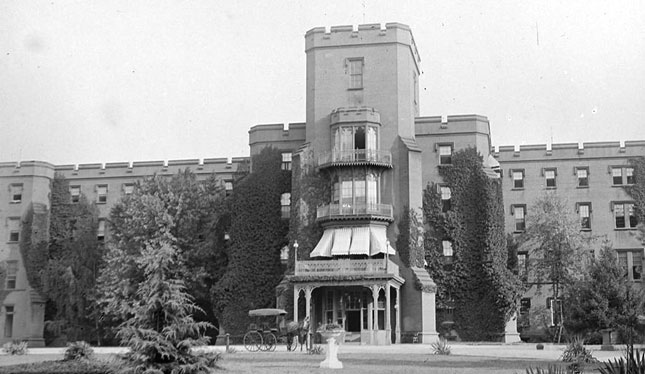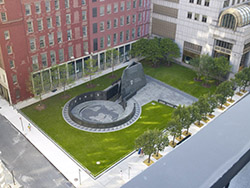GSA’s responsibility to protect historic properties extends to archaeological resources. Federal authorities, regulations and guidelines define how GSA preserves and treats archeological sites and objects. Chief among these regulations is Section 106 of the National Historic Preservation Act of 1966 (NHPA). Under Section 106, federal agencies must take into account how their undertakings may affect historic properties listed in or eligible for listing in the National Register of Historic Places. Through this process, GSA has been involved in significant archeological investigations at sites such as St. Elizabeths Hospital in Washington, DC, the Five Points neighborhood in New York City, and the African Burial Ground in lower Manhattan.
Please contact the Historic Preservation Branch if you would like additional information.
African Burial Ground
In 1991, during pre-construction work for the building that would become the Ted Weiss Federal Building at 290 Broadway, New York City, the seventeenth- and eighteenth-century remains of more than 400 Africans were discovered on the site of what had once been a graveyard for the black citizens of New York City, both free and enslaved. These remains represented a fraction of the estimated thousands of burials that took place. The finding deeply impacted the descendant and broader community and simultaneously renewed awareness in cultural significance and historic preservation.
Following the discovery, nearly two decades were dedicated to the documentation and interpretation of the site. The African Burial Ground was designated a National Historic Landmark in 1993, and a National Monument in 2006. In 2007, the African Burial Ground Memorial was dedicated. Since then, the memorial has become a sacred space where people can celebrate African American holidays such as Juneteenth (or Emancipation Day) and Kwanzaa, and learn more about African American history and the history of New York.
Five Points, New York, NY
GSA undertook archaeological investigations on the site of the new Foley Square U.S. Courthouse at 500 Pearl Street in fulfillment of GSA’s obligations under the NHPA and related federal legislation. Because of the study of the artifacts recovered in 1991, the daily lives of the people who lived in the thriving working-class neighborhood at Five Points became visible and tangible.
St. Elizabeths Hospital West Campus, Washington, D.C.

The façade of the completed Center Building shown here circa 1900. (National Archives)
In some cases, GSA’s due diligence reveals artifacts from several eras of history.
In 1855, St. Elizabeths opened as the first federally managed psychiatric hospital, serving members of the armed forces and District residents. St Elizabeths, a leader in mental health services for many years, also boasted a working farm, complete with cows, pigs, and crops, which provided occupational therapy and food for its residents. The hospital burial ground houses the remains of both Confederate and Union soldiers. Excavations during redevelopment uncovered landscape features associated with the hospital, including roads, paths, drains, and a brick kiln.
As part of the redevelopment of this National Historic Landmark site, GSA also assessed prehistoric and historic archeological resources at the former hospital. Research revealed that the area was once home to Native American camp sites. After European colonization, the property became part of a large plantation, and then was broken into smaller farms.
Research and cataloguing of artifacts are ongoing. As part of the Section 106 process, GSA is in consultation with the District of Columbia Historic Preservation Office (DCHPO), the Advisory Council on Historic Preservation (ACHP) and other consulting parties on various undertakings that are part of the redevelopment of St. Elizabeths, including an interpretive plan to tell the story of St Elizabeths.

 U.S. General Services Administration
U.S. General Services Administration

